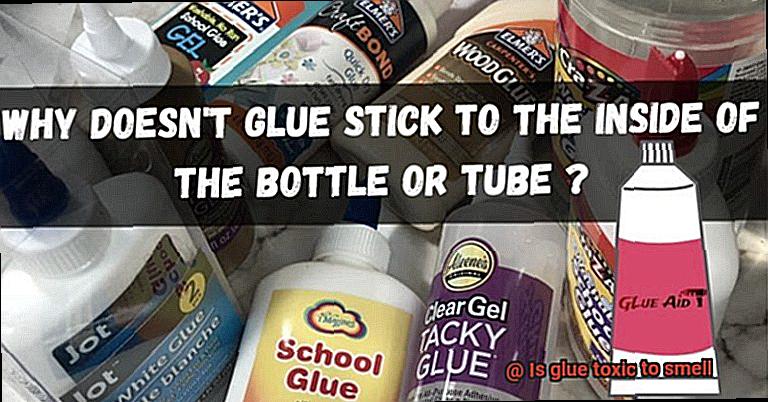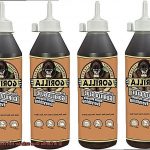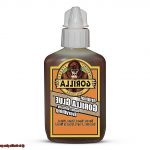Picture this: you crack open a fresh bottle of glue, and that unmistakable scent fills the air, instantly transporting you back to those carefree days of childhood crafts and school projects. But have you ever wondered if there’s more to this familiar fragrance than meets the nose? Today, we’re diving headfirst into the captivating question of whether sniffing glue can actually be toxic.
Sure, it’s easy to brush off any potential risks associated with glue fumes. After all, a quick whiff might not seem harmful at first glance. But here’s the thing – prolonged exposure or inhaling large amounts can wreak havoc on our well-being. In this blog post, we’ll dig deep into the potential health hazards lurking within those gluey vapors and explore why it’s absolutely vital to stay informed about these risks. So if you’re ready to untangle this sticky situation once and for all, keep reading.
Disclaimer: Now, before we go any further, let me make one thing crystal clear – I’m no doctor. The information I’m sharing here is purely for your knowledge and shouldn’t replace professional advice. If you have specific concerns or questions about your health, please seek guidance from a healthcare pro who knows their stuff.
Types of Glue
Contents
In this section, we will explore the different types of glue available in the market, their potential toxicity when smelled, and their applications. Glue is a versatile adhesive used for various purposes such as crafting, woodworking, and repairs. Understanding the different types of glue can help us determine if they are toxic to smell or not.
- White Glue: Also known as PVA (polyvinyl acetate) glue, white glue is a water-based adhesive commonly used in schools and households. It is non-toxic and generally safe to smell. However, some white glues may contain small amounts of chemicals that emit a mild odor. These odors are usually harmless and dissipate quickly. White glue is suitable for bonding porous materials like paper, cardboard, fabric, and wood.
- Super Glue: Super glue, also known as cyanoacrylate adhesive, is a fast-drying and strong adhesive. While super glue itself is not toxic to smell, it can release fumes that can irritate the eyes, nose, and throat if used in poorly ventilated areas. It is recommended to use super glue in well-ventilated spaces or wear a mask for added protection. Super glue is ideal for bonding non-porous materials like metal, plastic, and rubber.
- Epoxy Glue: Epoxy glue is a two-part adhesive that consists of resin and hardener. When mixed together, they create a strong bond that is resistant to heat, water, and chemicals. Epoxy glue typically has a strong odor due to the presence of volatile organic compounds (VOCs). The fumes emitted by epoxy glue can be harmful if inhaled in large quantities or over an extended period. It is important to use epoxy glue in a well-ventilated area and avoid breathing in the fumes directly. Epoxy glue is commonly used for bonding materials like metal, glass, ceramics, and certain plastics.
- Wood Glue: As the name suggests, wood glue is specifically designed for bonding wood surfaces. It comes in different forms such as yellow glue, aliphatic resin glue, and polyurethane glue. Wood glues are generally non-toxic and do not emit strong odors. However, some wood glues may contain small amounts of chemicals that can cause mild irritation when smelled directly. Wood glue is suitable for woodworking projects and repairs involving wood.
- Hot Glue: Hot glue, also known as hot melt adhesive, is a thermoplastic adhesive that is melted using a glue gun and applied in a liquid form. It solidifies quickly upon cooling, creating a strong bond. Hot glue generally does not emit toxic fumes, but it can release a noticeable odor due to the heating process. The smell is usually temporary and dissipates soon after the glue has cooled down. Hot glue is commonly used for crafts, DIY projects, and temporary bonds.
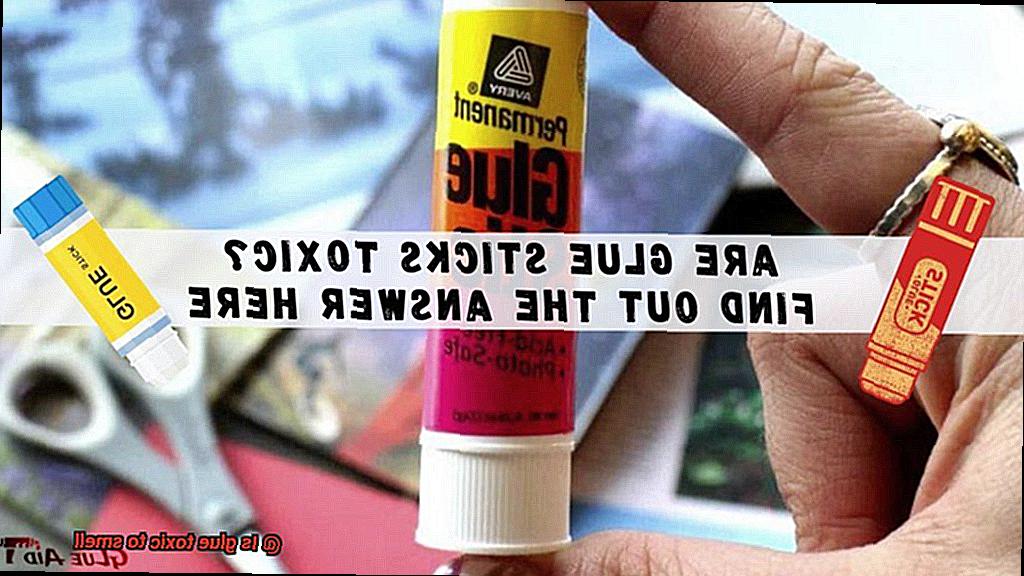
In conclusion, there are various types of glues available for different applications. While most glues are safe to smell in small quantities, prolonged exposure or inhalation of strong fumes can be harmful. It is always recommended to use glues in well-ventilated areas and avoid direct inhalation of fumes.
White Glue or School Glue
Today, we’re going to take a closer look at white glue and school glue to determine which one wins the toxicity smell contest. Whether you’re a craft enthusiast or a concerned parent, this information will help you make informed decisions when it comes to choosing the right glue for your projects.
Let’s start with our first contestant, white glue. This adhesive superstar, also known as polyvinyl acetate (PVA) glue, is a crowd favorite. It’s non-toxic and safe for most people to use. In the smell department, white glue typically boasts a mild aroma that won’t send you running for the hills. Think of it as a slightly sweet or vinegar-like scent that won’t leave your nose crinkling in disgust. However, if you happen to be sensitive to smells, you might experience some mild irritation, like sneezing or watery eyes. But fear not, my friends, this is more about individual allergies than actual toxicity.
Now, let’s meet our second contender, school glue. This water-based adhesive is a staple in classrooms and beyond. Like white glue, school glue is generally considered non-toxic and safe to use. When it comes to its smell profile, school glue might have a slightly stronger odor compared to white glue. But don’t worry, it’s nothing toxic or harmful. The smell can vary depending on the brand or formulation of the glue, but rest assured, it won’t knock you off your feet.
So what’s the verdict? Both white glue and school glue are safe and non-toxic when smelled. They may have mild odors that vary depending on the brand or formulation, but they won’t send you running for the nearest gas mask. Just remember to use them in well-ventilated areas and follow safety guidelines to ensure a safe and enjoyable crafting experience. And if you have any concerns or experience any adverse reactions, don’t hesitate to seek professional advice.
In a nutshell, both white glue and school glue are safe and non-toxic when smelled. They may have mild odors that vary depending on the brand or formulation, but they won’t send you running for the nearest gas mask. Just remember to use them in well-ventilated areas and follow safety guidelines to ensure a safe and enjoyable crafting experience. And if you have any concerns or experience any adverse reactions, don’t hesitate to seek professional advice.
Super Glue and Epoxy
Super Glue and Epoxy are adhesives commonly used for various purposes. Super Glue, also known as cyanoacrylate adhesive, is a fast-acting adhesive that forms a strong bond between surfaces. Epoxy, on the other hand, is a two-part adhesive that requires mixing before use.
Both Super Glue and Epoxy can release fumes that may be harmful if inhaled in large quantities or over a prolonged period of time. These fumes contain chemicals that can irritate the respiratory system and cause symptoms like coughing and throat irritation.
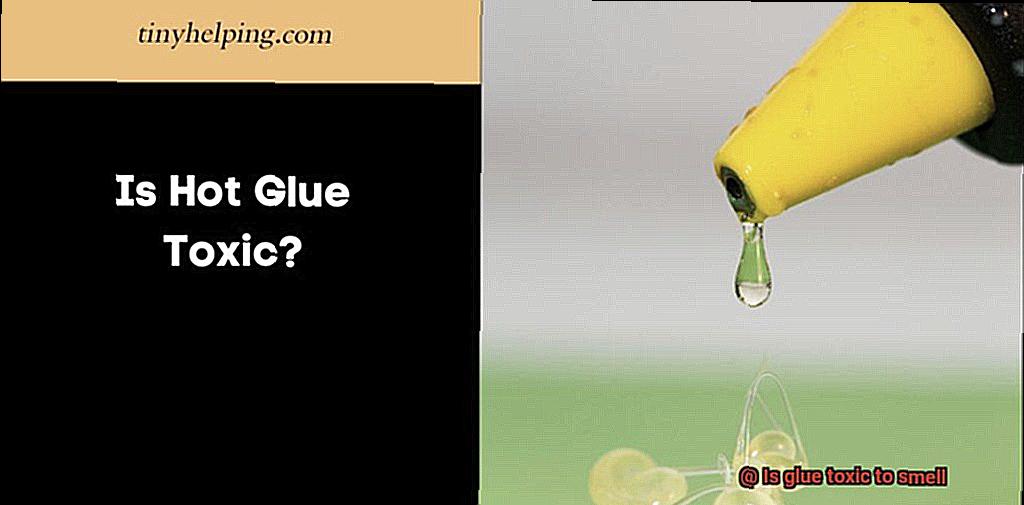
Super Glue has a strong odor, especially when used in large amounts or in enclosed spaces. The volatile chemicals in Super Glue evaporate and become airborne, causing the strong smell. While inhaling small amounts of these fumes is unlikely to cause harm, it’s still best to use Super Glue in a well-ventilated area or wear a mask.
Epoxy generally has a milder odor compared to Super Glue. However, the fumes released during mixing and curing can still be harmful if precautions aren’t taken. It’s recommended to use Epoxy in a well-ventilated area, avoid direct inhalation of fumes, and wear protective gear like gloves and a mask.
Individual sensitivity to these fumes can vary, so it’s important to know your tolerance and take necessary measures to minimize exposure. Tips for reducing exposure include using adhesives in well-ventilated areas, wearing protective gear, taking breaks for fresh air, and following manufacturer instructions.
Potential Health Risks of Inhaling Fumes
When it comes to using glue, it’s crucial to be aware of the potential health risks associated with inhaling its fumes. Glue fumes often contain volatile organic compounds (VOCs), which are chemicals that can easily evaporate at room temperature and be released into the air as fumes. These VOCs can have both short-term and long-term health effects, making it essential to take precautions when working with glue products.
Short-term exposure to glue fumes can cause irritation of the eyes, nose, and throat. You may experience redness, itching, watering of the eyes, a runny nose, a sore throat, coughing, and difficulty breathing. These symptoms can be particularly problematic for individuals with respiratory conditions like asthma or allergies, as they may exacerbate existing symptoms.
Prolonged or repeated exposure to glue fumes can lead to more serious health issues. Chronic respiratory problems, including bronchitis and asthma, can develop over time. Furthermore, some individuals may experience allergic reactions to certain components of the glue, resulting in skin rashes or dermatitis.
It is important to note that certain types of glue pose greater risks to health than others. Glues containing formaldehyde or benzene are particularly concerning. Formaldehyde is a known human carcinogen and has been linked to an increased risk of cancer, especially in the nasal cavity and throat. Similarly, benzene is classified as a human carcinogen and is associated with a higher risk of leukemia.
Inhaling glue fumes can also affect the central nervous system. The solvents present in glue can reach the brain through inhalation and cause symptoms such as dizziness, headaches, confusion, and even loss of consciousness in extreme cases.
The severity of the health effects will depend on factors such as the duration and intensity of exposure, individual sensitivity, and ventilation in the area where the glue is being used. Enclosed spaces with poor ventilation increase the risks associated with inhaling glue fumes.
To minimize potential health risks, it is important to take precautionary measures when working with glue. Ensure that the working area is well-ventilated by opening windows or using exhaust fans. Wearing a mask or respirator specifically designed to filter out fumes can provide added protection. It is also advisable to wear gloves and avoid direct contact with the glue to prevent skin irritation or absorption.
Proper Ventilation is Essential
Proper ventilation is not just a luxury; it is an absolute necessity when working with glue. The release of harmful fumes during the drying process can have serious consequences for our respiratory system if we are not careful. Glue contains a cocktail of chemicals that evaporate and become airborne, posing a significant risk to our health if inhaled. So, why is proper ventilation essential in this context? Let’s explore the reasons in more detail.
Firstly, the fumes emitted by glue are not to be taken lightly. These fumes contain solvents and adhesives that can wreak havoc on our respiratory system. Breathing in these toxic fumes can lead to symptoms such as headaches, dizziness, nausea, and irritation of the eyes, nose, and throat. But the dangers don’t stop there. Prolonged exposure to these fumes can even increase the risk of more severe respiratory problems and potentially even cancer.
Now, imagine working in a confined space with poor ventilation. The concentration of these hazardous fumes in the air would skyrocket, putting you at an even greater risk. That’s why it is absolutely crucial to ensure adequate airflow and ventilation when working with glue. We need to minimize the chances of inhaling these noxious chemicals.
To achieve proper ventilation, it is essential to work in a well-ventilated area. This means finding a workspace with open windows or doors that allow fresh air to circulate freely. The circulation of fresh air acts as a natural dilution mechanism, reducing the concentration of harmful fumes in the air and safeguarding your health.
But what if you find yourself in a situation where working in a well-ventilated area is simply not possible? Well, fear not. There are still options available to you. Consider using fans or air purifiers to improve air circulation and eliminate any lingering fumes. These devices can create much-needed airflow and prevent the build-up of these harmful chemicals in your workspace.
Another factor to consider is the duration of glue usage and the type of glue you are working with. Some glues have stronger fumes than others, so it is essential to read and follow the manufacturer’s instructions for safe usage. Additionally, try to minimize the time spent in close proximity to the glue and take regular breaks in a well-ventilated area. These simple steps can significantly reduce your exposure to hazardous fumes.
Lastly, when working on larger projects or using particularly potent adhesives, it is advisable to wear a respirator or mask specifically designed for chemical fume protection. These masks act as a shield between your precious respiratory system and the potentially toxic fumes emitted by the glue. By taking this extra precaution, you can further minimize the risk of inhalation and ensure your safety.
Manufacturer’s Instructions and Safety Precautions
Manufacturer’s Instructions and Safety Precautions are crucial when it comes to using glue. Glue products can vary significantly in their composition and potential health hazards, which is why it is important to read and follow the manufacturer’s instructions.
Firstly, understanding the specific glue you are using is essential. The manufacturer’s instructions provide valuable information about the glue, including its properties and associated risks. By reading these instructions, you can make informed decisions about whether you should be exposed to the glue’s smell or fumes.
In addition, following safety precautions helps to minimize health risks. Manufacturer’s instructions often include recommendations for minimizing exposure to potentially harmful fumes or chemicals released by the glue. These precautions may include using the glue in a well-ventilated area or wearing protective equipment such as gloves or goggles. By following these precautions, you can reduce the risk of experiencing adverse health effects from the glue.
It is also important to tailor precautions to the specific product. Different types of glues may have different safety precautions. For example, certain glues may emit more fumes than others, requiring additional ventilation or caution during use. By referring to the specific instructions for each product, you can ensure that you are taking the appropriate safety measures.
Moreover, considering the safety of children and vulnerable individuals is crucial. Some glues may have age restrictions or guidelines for safe use around children. It is vital to adhere to these recommendations to prevent accidental ingestion or exposure to harmful chemicals. By following the manufacturer’s instructions, you can ensure the safety of both yourself and those around you.
In addition to following the manufacturer’s instructions, general safety precautions should also be taken when working with glue. This includes working in a well-ventilated area, avoiding direct skin contact, and keeping glue containers tightly closed when not in use.
If you experience any adverse reactions while using glue, such as dizziness, nausea, or difficulty breathing, it is important to seek immediate medical attention. These symptoms could indicate an allergic reaction or other health concerns related to the glue’s fumes.
Exercise Caution When Working with Strong Adhesives
Strong adhesives, such as epoxy or super glue, are widely used in various industries and for DIY projects due to their strong bonding properties. However, it is essential to exercise caution when working with these adhesives, as they can be hazardous if not handled properly.
One of the main reasons for exercising caution is the emission of strong odors by these adhesives. These odors are often indicative of the presence of chemicals that can be potentially toxic if inhaled in large amounts or for prolonged periods. Common chemicals found in strong adhesives include toluene, xylene, and formaldehyde, which are known to have harmful effects on human health.
Inhaling the fumes emitted by these adhesives can lead to symptoms such as headaches, dizziness, nausea, and respiratory irritation. Prolonged exposure to these fumes may even result in more serious health issues, including damage to the nervous system, liver, or kidneys. Therefore, it is crucial to take necessary precautions to minimize the risk of exposure to harmful fumes.
To ensure your safety when working with strong adhesives, here are some important precautions to follow:
- Work in a well-ventilated area: Proper ventilation is key to dissipating the fumes and reducing their concentration in the air. Open windows or doors or use fans to increase airflow. If working in a confined space, consider using a fume hood or an exhaust system to remove fumes from the immediate surroundings.
- Use personal protective equipment: Wear gloves and a mask to protect your skin and prevent inhalation of fumes. Make sure the gloves are chemically resistant and suitable for the specific adhesive being used. The mask should be capable of filtering out small particles and chemical vapors.
- Read and follow manufacturer’s instructions: Each adhesive may have specific guidelines for safe use and disposal. It is essential to carefully read and adhere to these instructions. This includes information on recommended application methods, curing times, and any precautions to take during the process.
- Take regular breaks: If you are working on a project that requires prolonged exposure to strong adhesives, take regular breaks and step outside for fresh air. This will help reduce the risk of continuous exposure and allow your body to recover from any potential effects of the fumes.
- Seek medical attention if needed: If you experience any symptoms of toxicity, such as persistent headaches or respiratory problems, it is important to seek medical attention immediately. Inform the healthcare professional about the adhesive you were working with and provide any relevant information on the duration and extent of exposure.
tZHCvpYvKOQ” >
Conclusion
In conclusion, it is important to be cautious when exposed to the smell of glue. The fumes emitted by certain types of glue can indeed be toxic and harmful to your health. Breathing in these toxic fumes for prolonged periods can lead to a range of health issues, including respiratory problems, headaches, dizziness, and even long-term damage to organs like the liver and kidneys.
Therefore, it is crucial to ensure proper ventilation when using glue or being in an environment where glue is being used. This will help minimize your exposure to the toxic fumes and reduce the associated risks. Additionally, wearing protective equipment such as masks or respirators can provide an extra layer of defense against inhaling these harmful substances.
While some glues may have less potent fumes than others, it is always better to err on the side of caution and prioritize your safety. Remember, prevention is key when it comes to avoiding potential health hazards.
So next time you encounter that distinct smell of glue, take a moment to assess the situation and make sure you are taking the necessary precautions. Your well-being should never be compromised for the sake of convenience or quick fixes.

